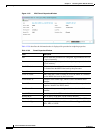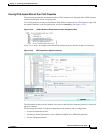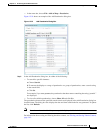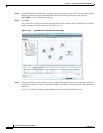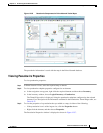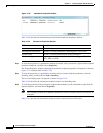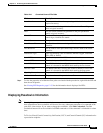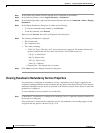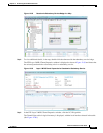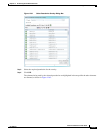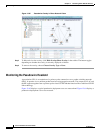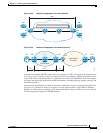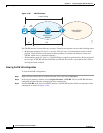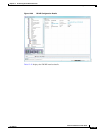
12-96
Cisco Prime Network 4.0 User Guide
OL-29343-01
Chapter 12 Monitoring Carrier Ethernet Services
Working with Pseudowires
Step 1 In the require map, double-click the required device configured for pseudowire.
Step 2 In the inventory window, choose Logical Inventory > Pseudowire.
Step 3 In the Tunnel Edges table, right-click the required interface and choose Commands > Show > Display
Pseudowire.
Step 4 In the Display Pseudowire dialog box, do either of the following:
• To view the command before running it, click Preview.
• To run the command, click Execute.
When you click Execute, the results are displayed in the dialog box.
Step 5 The following information is displayed:
• The element name.
• The command issued.
• The results, including:
–
VCCV: CC Type—The types of CC processing that are supported. The number indicates the
position of the bit that was set in the received octet. The available values are:
- CW [1]—Control Word
- RA [2]—Router Alert
- TTL [3]—Time to Live
- Unkn [x]—Unknown
–
Elapsed time—The elapsed time, in seconds.
Step 6 Click Close to close the Display Pseudowire dialog box.
Viewing Pseudowire Redundancy Service Properties
If a pseudowire is configured for redundancy service, a redundancy service badge is applied to the
secondary (backup) pseudowire in the navigation and map panes in the Prime Network Vision window.
Additional redundancy service details are provided in the inventory window for the device on which the
pseudowire is configured.
To view redundancy service properties for pseudowires:
Step 1 To determine if a pseudowire is configured for redundancy service, expand the required pseudowire in
the navigation or map pane.
If the pseudowire is configured for redundancy service, the redundancy service badge appears in the
navigation and map panes as shown in Figure 12-58.



